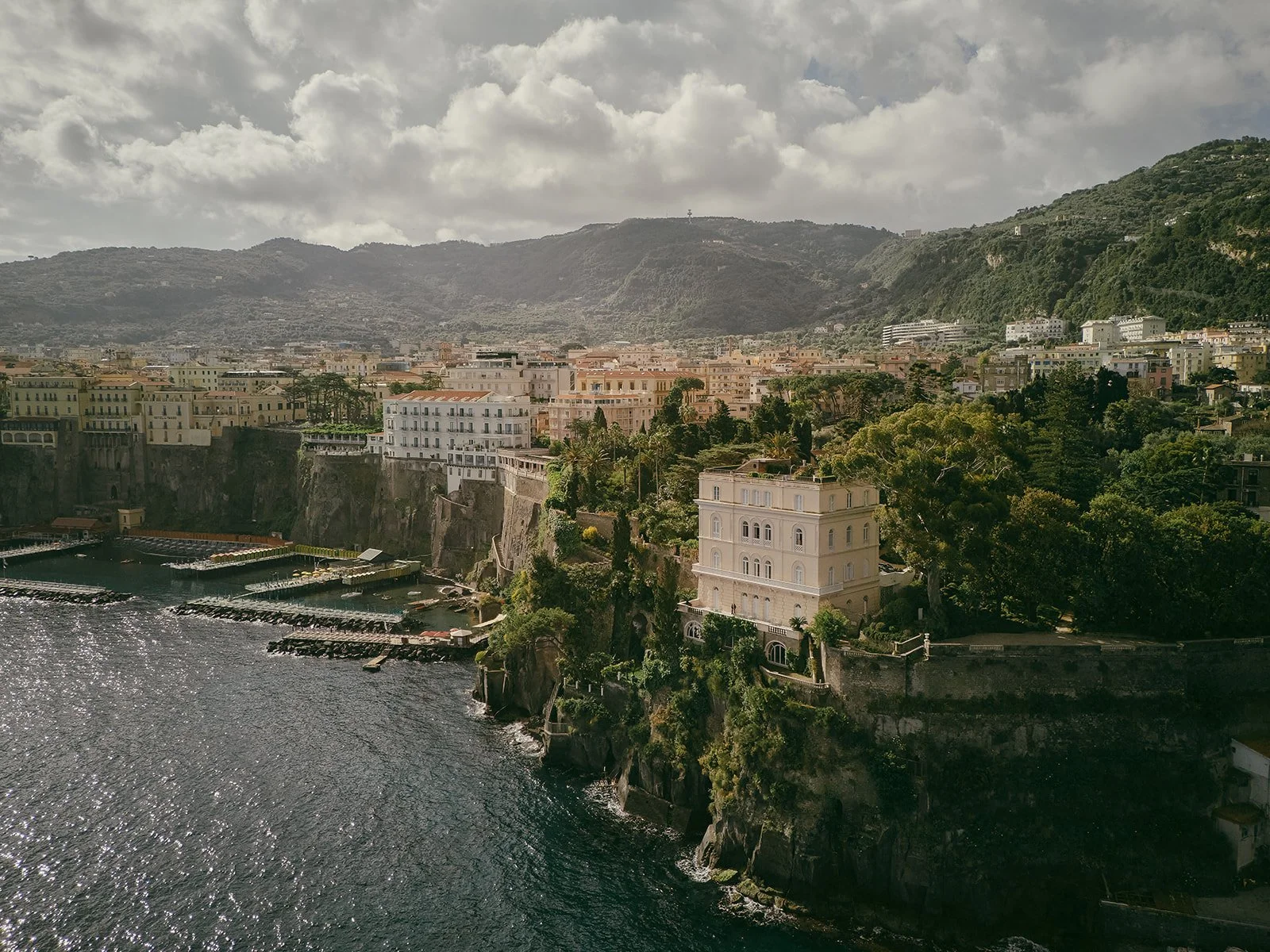
Your Italy Wedding Blueprint: Everything You Need to Get Started
The Ultimate Italy Wedding Planning Checklist
A detailed guide with 10 essential steps for planning an unforgettable wedding in Tuscany, Puglia, or the Amalfi Coast — designed by a destination photographer who’s seen it all.

1. Choose the Right Location
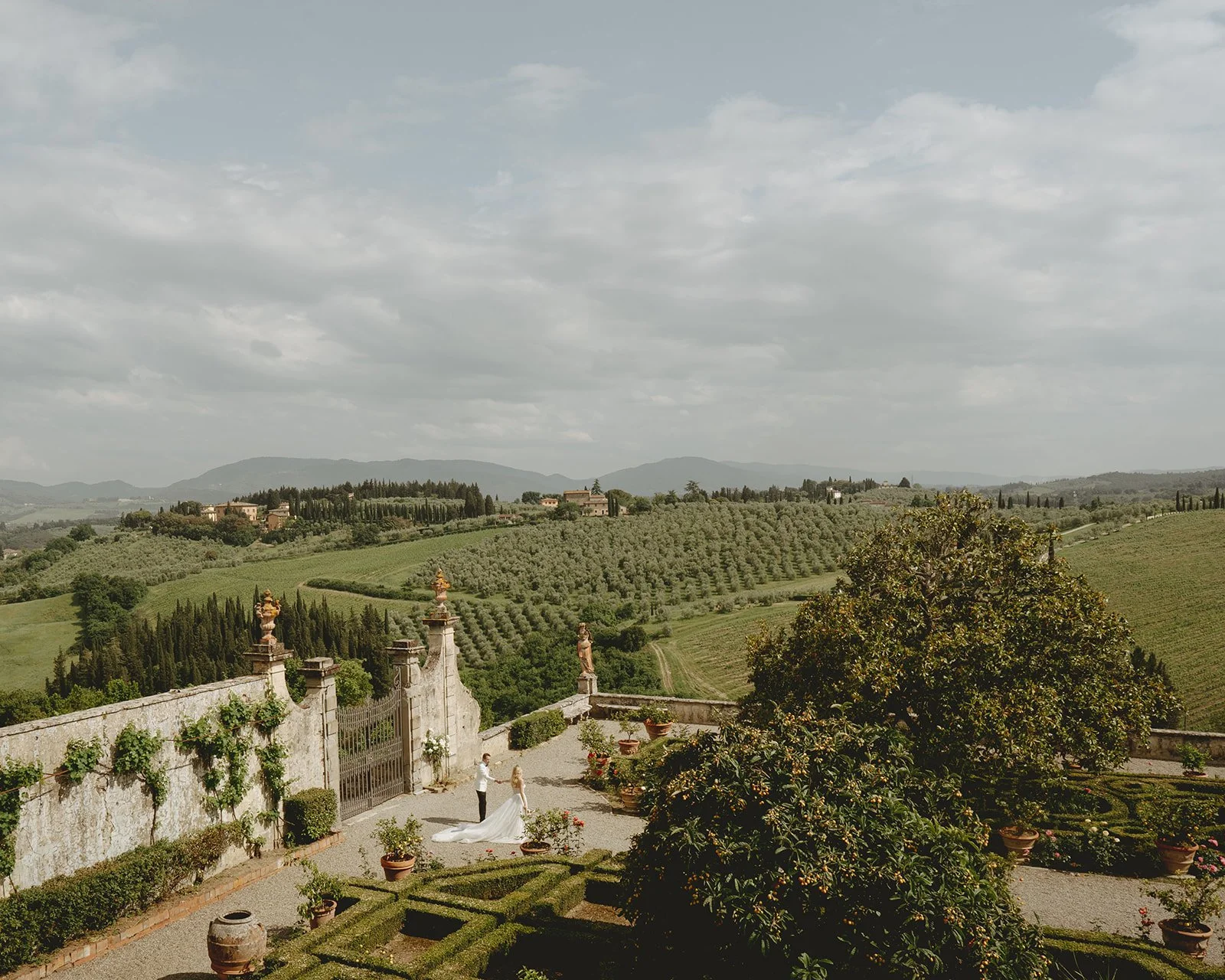
Italy’s diverse regions each have their own unique charm and character, making the decision of where to hold your wedding both exciting and challenging. Here are some popular options:
-
Tuscany: Known for its stunning countryside, vineyards, and historic villas, Tuscany is perfect for couples looking for a rustic and romantic setting.
-
Amalfi Coast: Famous for its dramatic cliffs, azure sea, and charming coastal towns, the Amalfi Coast offers breathtaking views and luxurious venues.
-
Puglia Puglia, with its stunning coastlines, charming trulli houses, and olive groves, offers a picturesque and serene setting for your wedding. Its unique blend of natural beauty and rich history ensures a memorable celebration.
-
Lake Como: Surrounded by lush mountains and elegant villas, Lake Como is ideal for a glamorous and serene wedding.
-
Rome: The Eternal City offers a mix of ancient history and modern elegance, with numerous historic churches and stunning outdoor venues.
When choosing your location, consider the atmosphere you want for your wedding and the travel logistics for your guests. Visiting potential locations, if possible, can provide invaluable insight and help you make an informed decision.
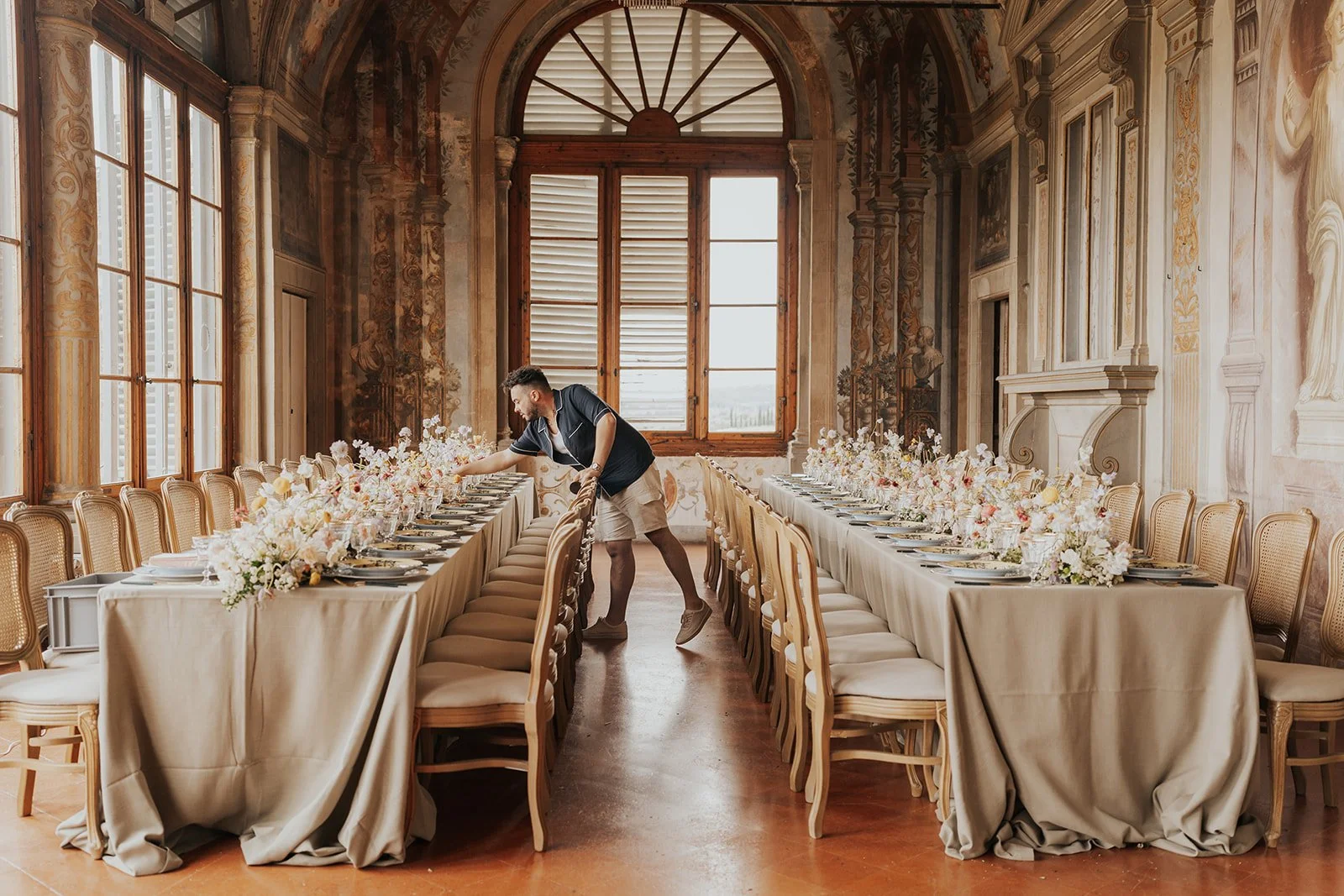
2.Hire a Local Wedding Planner or a Destination Wedding Planner
A local wedding planner or a Destination wedding planner is an invaluable resource when planning a destination wedding in Italy.
They will have:
Insider Knowledge: Local planners know the best vendors, venues, and services, and can recommend options that align with your vision and budget.
Language Skills: Navigating the language barrier can be challenging, but a local planner will handle communication with vendors and officials, ensuring nothing is lost in translation.
A great planner will help you build a trusted vendor team, but feel free to bring key people whose work you love — like your photographer, stylist, or videographer.
Ask questions early:
-
Are there travel fees?
-
Will they need assistance with lodging?
-
Have they worked in Italy before?
I travel with ease and work seamlessly alongside local teams, ensuring your photos feel as natural as the day itself. Download your free Italy Wedding Planning Checklist
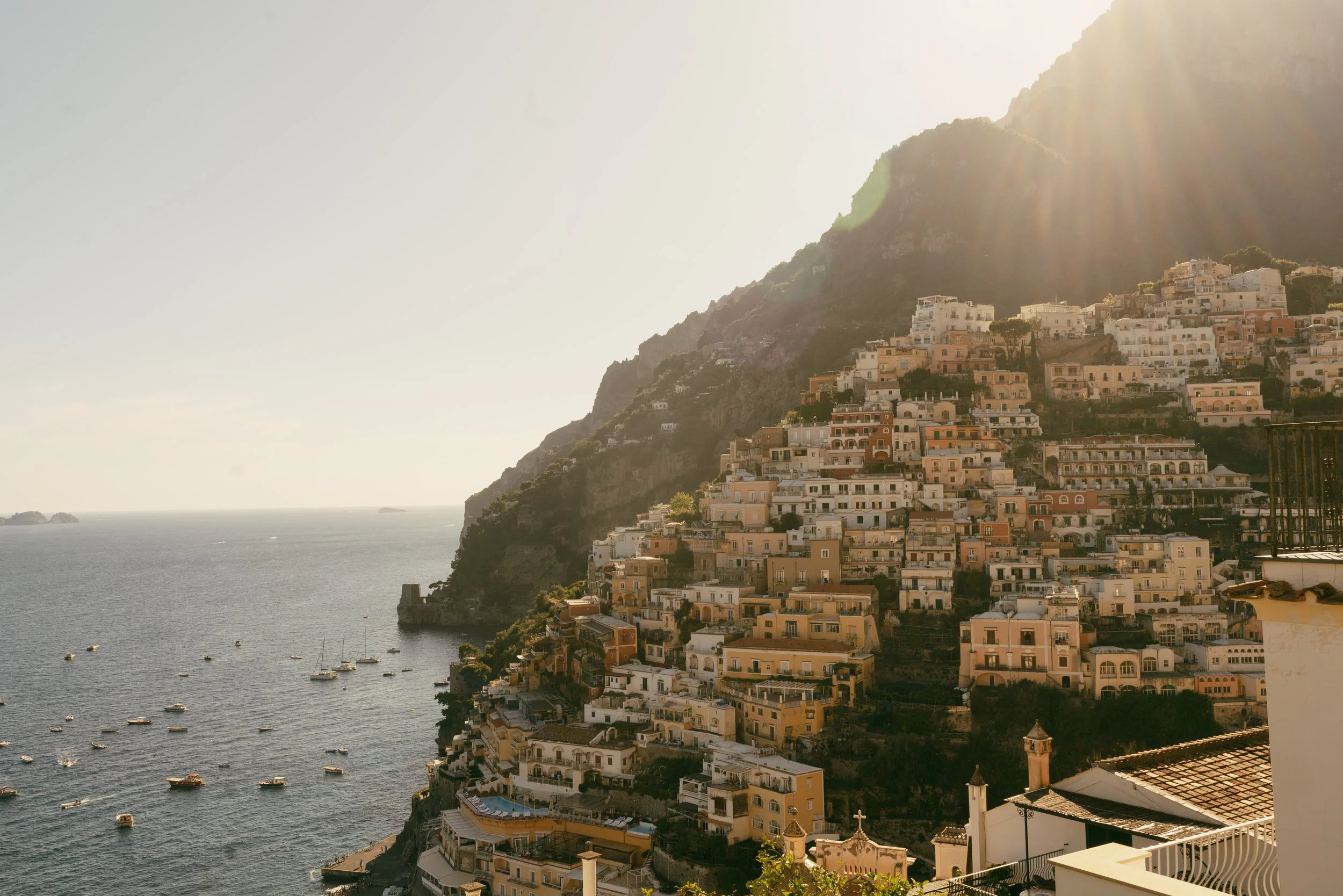
3.Legal Requirements
Getting legally married in Italy involves paperwork, translations, and a visit to the local town hall. For many couples, it’s simpler to do the legal part at home and hold a symbolic ceremony in Italy.
Your planner can walk you through the necessary documents (these vary by nationality) and help ensure everything is legally sound.
Legal Assistance: They can guide you through the legal requirements and paperwork needed for a foreign wedding, saving you time and potential headaches.
-
Getting married in Italy involves specific legal procedures, especially for non-residents. Key steps include:
Documents Needed: Typically, you will need your passports, birth certificates, and a “nulla osta” (a declaration that there are no obstacles to your marriage). Additional documents may be required based on your nationality.
-
Translations and Legalization: Some documents must be translated into Italian and legalized with an Apostille stamp.
-
Civil and Religious Ceremonies: Civil ceremonies are legally binding, while religious ceremonies might need additional documentation. For example, a Catholic wedding requires baptism and confirmation certificates, among other documents.
-
Consult the Consulate: Contact the Italian consulate in your country for specific requirements and guidance. Starting this process early is crucial to ensure all paperwork is completed on time.
What Americans Need to Know About Getting Married in Italy or France
Getting married abroad is a dream for many couples, and for those looking to tie the knot in the romantic and picturesque destinations of Italy or France, it’s an incredible choice. But before you start packing your bags, there are a few essential things you need to know to make sure your marriage is legal, your wedding is smooth, and your photos are as breathtaking as the scenery.
Here are a few key points to keep in mind:
You May Need a Symbolic Ceremony If You’re Not a Citizen
Example: My husband Jason and I could only have a symbolic ceremony in Paris since we weren’t French citizens. While we were able to exchange vows in front of our loved ones, our legal marriage had to take place back in the U.S. This is because certain countries, like Italy and France, require one or both parties to be citizens in order to hold a legal ceremony.
What You Need to Know:
-
If you’re not a citizen of the country you’re getting married in, you’ll likely need to have a symbolic ceremony. The good news? This doesn’t take away from the magic of the day! It still offers you the chance to have that stunning wedding in your dream location.
-
Be sure to research any legal requirements for your country of residence and ensure you’ve filed the necessary paperwork back home to have your marriage recognized once you return.
Legal Requirements Can Vary
Each country has its own legal requirements for marriage, and Italy and France are no different. Here’s what you need to look out for:
-
In France, you need to be a resident for at least 40 days prior to the wedding for the ceremony to be legally binding, and it requires an official civil ceremony in a town hall.
-
In Italy, the requirements are less rigid for citizens but still include submitting various documents, including birth certificates, passports, and sometimes residency verification. Depending on where you are, the ceremony may need to be performed by a mayor or a local officiant.
Pro Tip: It’s essential to start researching and organizing paperwork well in advance, at least 6 months before the wedding, to ensure everything is in order.
Language Barrier and Translators
While most Italian and French people speak English, you may want to hire a translator, especially for the official parts of your ceremony or legal documentation. Some documents may also need to be translated into the local language before they are submitted.
Pro Tip: Consider hiring a bilingual officiant or someone who can help you navigate the language barrier. It’s also worth checking with your wedding planner if they can provide a translation service to ensure everything runs smoothly.
4. Set a Realistic Budget
Budgeting for a destination wedding involves more than just the usual wedding costs. Consider the following:
-
Travel Expenses: Account for airfare, accommodations, and transportation for you and potentially your wedding party.
-
Venue and Catering: Prices can vary significantly based on the location and level of luxury you choose.
-
Local Vendors: Hiring local vendors can save on travel costs and often ensures better local knowledge and quality.
-
Currency Exchange: Keep an eye on exchange rates and potential fluctuations. It’s wise to set aside a contingency fund for unexpected expenses.
Creating a detailed budget and sticking to it will help you manage costs effectively and avoid financial stress.
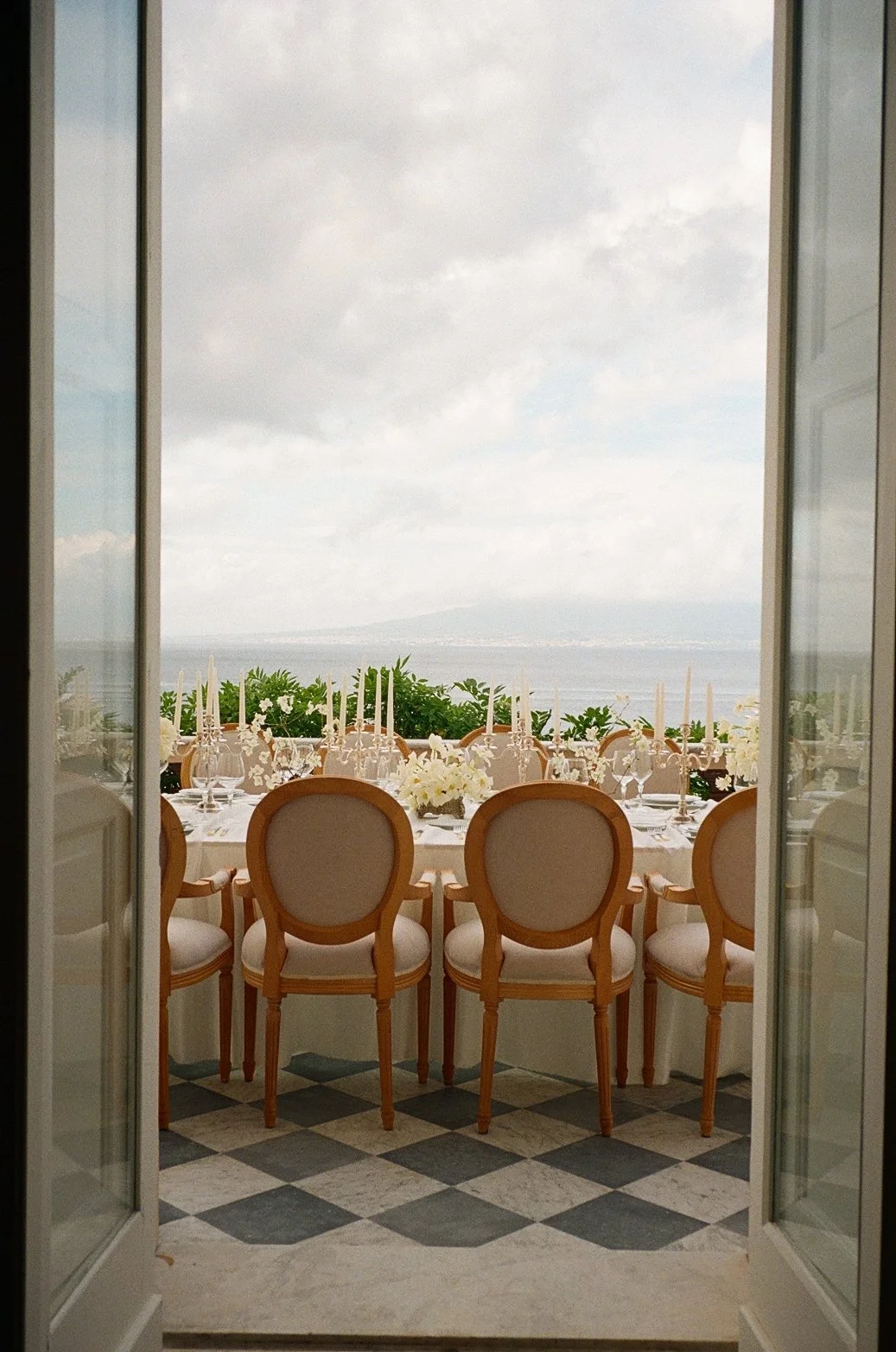

5.Visit in Advance
If possible, visiting Italy before your wedding offers numerous benefits:
-
Venue Visits: Seeing potential venues in person helps you make an informed decision and visualize your wedding day.
-
Vendor Meetings: Meeting vendors face-to-face allows you to discuss your vision, preferences, and any concerns directly.
-
Food Tasting: Trying the menu options in advance ensures you’re happy with the catering choices.
-
Logistics Planning: Exploring the area can help you plan guest activities, accommodations, and transportation.
This trip can also serve as a mini getaway to get excited about your upcoming nuptials.
6. Think Beyond the Ceremony

Your Italian wedding can be more than just a single day — it can be a journey.
When you choose to celebrate in Italy, you’re not just choosing a destination — you’re inviting your closest people into a deeply meaningful experience. Think of your wedding not as a single event, but as a multi-day celebration filled with opportunities to savor, connect, and create memories that stretch far beyond the vows.
Imagine this: guests arrive to a welcome aperitivo at golden hour, the sound of clinking glasses and soft laughter echoing through a historic villa courtyard. The next day, perhaps a guided pasta-making class in a sun-drenched farmhouse kitchen, where your families blend flour and stories. Evenings become candlelit dinners beneath ancient trees, local wine flowing freely as conversations linger. After the wedding day itself — heartfelt, beautiful, unforgettable — a relaxed brunch invites everyone to relive the magic, share favorite moments, and say their goodbyes with full hearts.
These intentional touchpoints give guests the time to truly slow down and settle in — to feel the rhythm of Italian life. For many, it will be their first time visiting; for others, a return to something familiar. Either way, the chance to explore together — whether wandering cobblestone streets, swimming in the sea, or simply sharing a late-night gelato — makes your wedding feel like so much more than an event. It becomes a shared chapter, one that deepens relationships and reminds everyone of what really matters.
For you as a couple, the beauty lies in watching your favorite people from different chapters of your lives come together in one place, forming new friendships and memories alongside you. It’s about designing an experience that reflects your personalities, your story, and your love — from the food and the music to the setting and the energy of the weekend.
This is the magic of a destination wedding in Italy. It’s not about extravagance — it’s about intention. It’s about creating space to breathe, to be present, to celebrate not just one moment, but the entire journey.
7. Send Save-the-Dates Early
Giving your guests ample notice is crucial for a destination wedding. Here’s how to manage the timeline:
-
12+ Months in Advance: Send save-the-dates as soon as you’ve set the date and location. This allows guests to arrange time off work, save money, and book travel.
-
Include Key Information: Provide essential details like the wedding date, location, and accommodation options. Consider creating a wedding website for additional information and updates.
-
Travel Tips: Offer travel tips and recommendations, such as nearest airports, suggested airlines, and potential travel agents for group bookings.
-
Pro Tip: Create and send your guests a Pinterest board with attire inspiration to help them dress in a way that fits the vibe of your location and wedding style. This ensures a cohesive and beautifully curated look in photos!
Early communication ensures your guests have plenty of time to plan and commit to attending your wedding.

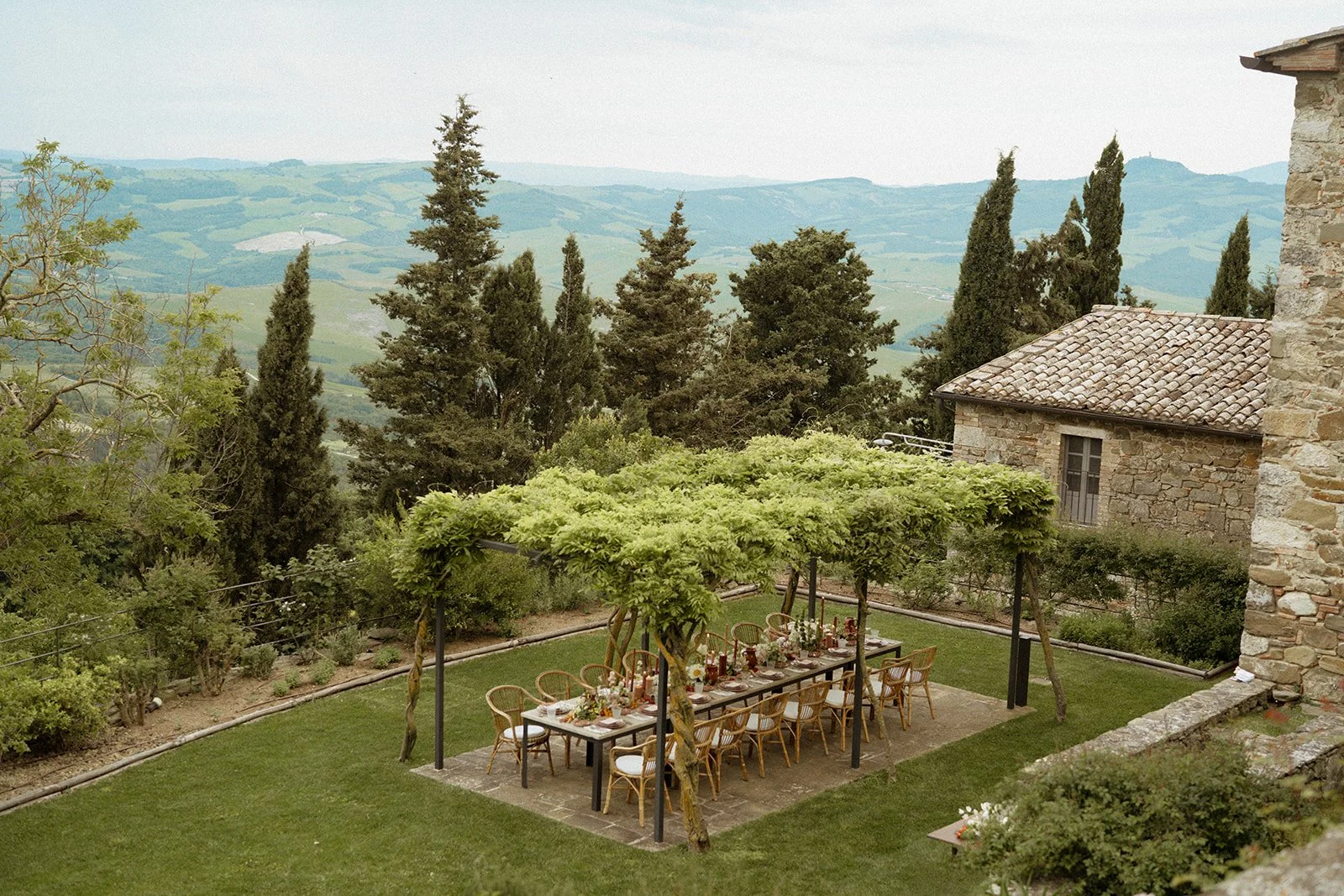
8. Consider the Season
Italy’s climate varies by region and season, impacting both the weather and the number of tourists. Here are some seasonal considerations:
-
Spring (April to June): Generally offers mild weather and beautiful blooming landscapes. It’s a popular time for weddings, so book early.
-
Summer (July to August): Expect hot weather, especially in southern Italy, and a high influx of tourists. Venues and accommodations may be more expensive and harder to book.
-
Autumn (September to October): Offers pleasant temperatures and stunning fall foliage. It’s an ideal time for a wedding with fewer tourists.
-
Winter (November to March): Cooler temperatures and potential rain in some regions. However, it’s a great time for a cozy, intimate wedding, especially in historic cities like Rome and Florence.
Choose a season that aligns with your vision and provides a comfortable experience for your guests.

9. Embrace Local Traditions
Incorporating Italian traditions can add a unique and authentic touch to your wedding. Consider these customs:
Food and Drink: Italian weddings are known for their lavish feasts. Serve traditional dishes like pasta, risotto, and local wines. Consider a gelato cart or a limoncello toast.
-
Music: Hire local musicians to play traditional Italian music. A mandolin or accordion player can add a charming touch.
-
Customs: Embrace customs like the “La Tarantella” dance, or the tradition of the groom carrying the bride over the threshold.
-
Symbolic Gestures: Incorporate symbolic elements such as releasing white doves or lighting a unity candle.
These elements not only enhance the experience but also provide your guests with a taste of Italian culture.
10. Hire a Professional Photographer
Your wedding in Italy will be beautiful — and your photographer needs to be able to capture it with artistry, care, and fluency in the setting.
As a photographer who’s worked all across Italy — from the golden hills of Tuscany to the coastal charm of Puglia and the iconic cliffs of the Amalfi Coast — I understand the light, movement, and subtle storytelling moments that make a destination wedding so special. My approach is documentary-led with an editorial sensibility, capturing not just how it looked, but how it felt.
I had my own destination wedding in France, which deepened my love for the romance and atmosphere European weddings offer. While I haven’t photographed a wedding in France yet, it’s a dream I’m eager to bring to life — and I would be honored to document one in such an inspiring setting.
-
As a professional destination wedding photographer, I specialize in creating timeless images that encapsulate the romance and beauty of your special day.
-
It would be an honor to photograph your wedding in Italy, France and Beyond.

Bonus Tip: Plan for Guest Experience and Comfort
Your guests are traveling across the world to celebrate with you — thoughtful planning ensures they feel welcomed, informed, and taken care of from the moment they arrive.
Accommodation: Share a curated list of stays that fit a range of budgets. Consider blocking rooms at a nearby hotel or villa to make booking easy.
Transportation: Arrange (or recommend) transport to and from the airport, and between venues. A shared shuttle or organized schedule takes the stress out of getting around unfamiliar roads.
Welcome Bags: These don’t have to be extravagant — just personal. Include local snacks, a handwritten note, a printed itinerary, and helpful details like maps or sunscreen.
Itinerary & Activities: Share a printed or digital itinerary of all wedding-related events, and suggest a few of your favorite restaurants or local gems nearby. It turns your wedding into a mini getaway they’ll never forget.
Hint: You can even create a simple wedding website to keep guests in the loop before they land in Italy.

Don’t Forget to Soak It All In
This experience — planning a wedding in Italy — is a once-in-a-lifetime adventure. Yes, there are logistics. Yes, there are to-do lists. But don’t forget to take moments along the way to pause, breathe, and enjoy it.
Ready to make your dream wedding in Italy a reality? Contact me today to discuss your vision and how we can create stunning memories together.
Pro Tip: For even more venue inspiration and creative ideas, be sure to check out my Venues & Experiences pages. I’ve curated tons of venues and stunning concepts to help you visualize your dream wedding. As a photographer, I’ve had the privilege of seeing some of the most beautiful locations in Italy and beyond—and I’d love to share my insights with you. Many couples overlook the value of getting advice from their photographer early on, but trust me, it’s one of the best decisions you can make to elevate your wedding day.
